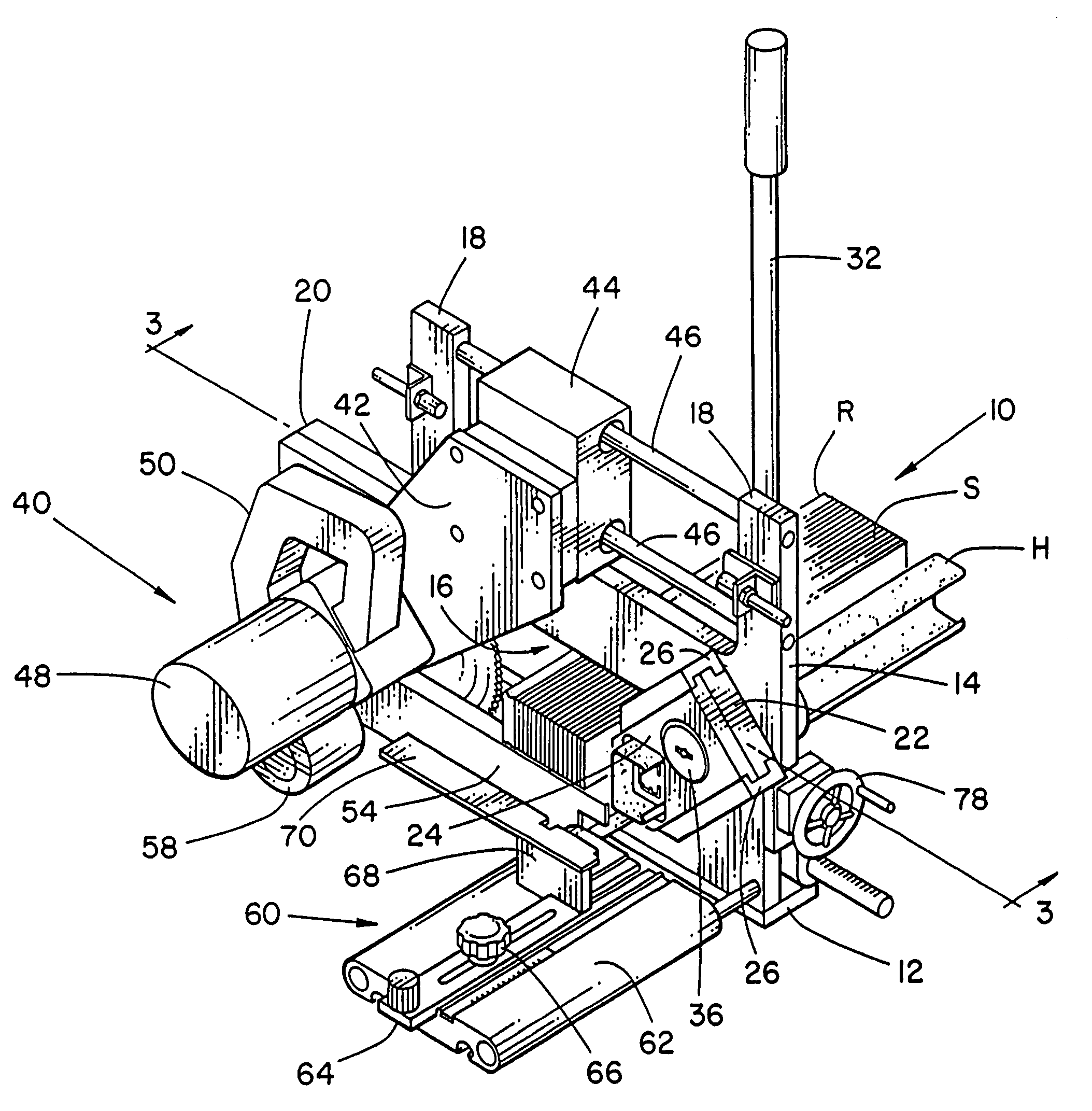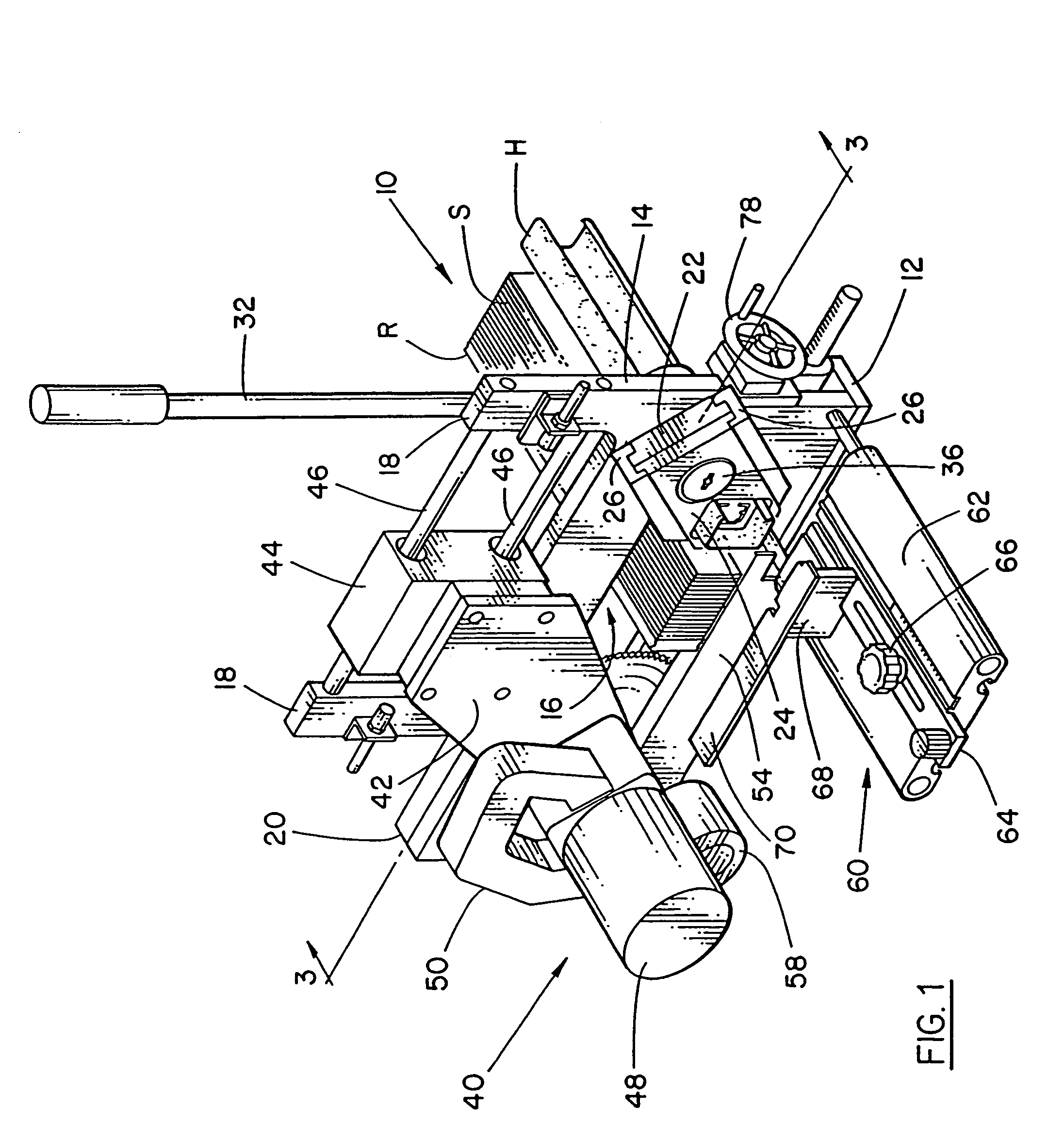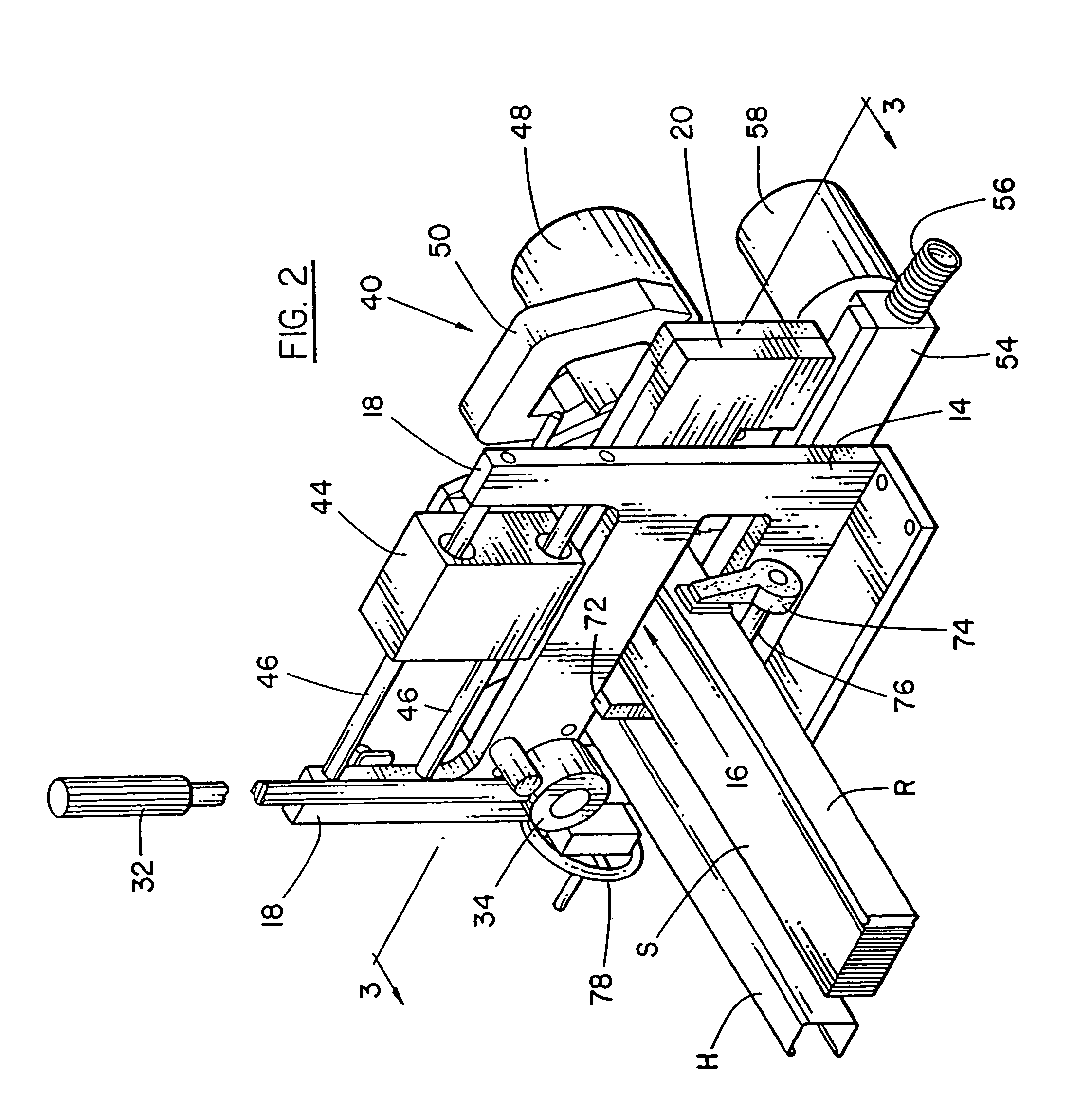Blind cut down machine
a blind cutting machine and blind cutting technology, applied in the field of blind cutting machines, can solve the problems of not being completely suitable for cutting blinds, shears or cutting blades are not suitable for cutting blind slats, and the metal used in head rails is relatively difficult to cu
- Summary
- Abstract
- Description
- Claims
- Application Information
AI Technical Summary
Benefits of technology
Problems solved by technology
Method used
Image
Examples
Embodiment Construction
[0054]Referring first of all to FIGS. 1 and 2, the invention is there illustrated in the form of a blind cut down machine indicated generally as 10. Such a machine is intended to be installed at a retail store, and would be bolted on a working surface somewhere in a service area away from the customers.
[0055]As explained above the purpose of the apparatus 10 is to be capable of trimming the head rail and slats both of horizontal or so called Venetian blinds, and also the head rail and slats of vertical blinds.
[0056]Where a Venetian blind has a bottom rail, then the apparatus is also capable is cutting down the bottom rail, if such a blind has a bottom rail.
[0057]It should also be understood that in the case of Venetian blinds, the Venetian blind is already assembled so that there are so called ladder tapes and also raise cords which are already attached to the slats, and connected to the head rail.
[0058]As a result, when trimming the ends of the blind head rail and slats, in Venetia...
PUM
| Property | Measurement | Unit |
|---|---|---|
| length | aaaaa | aaaaa |
| angle | aaaaa | aaaaa |
| movement path | aaaaa | aaaaa |
Abstract
Description
Claims
Application Information
 Login to View More
Login to View More - R&D
- Intellectual Property
- Life Sciences
- Materials
- Tech Scout
- Unparalleled Data Quality
- Higher Quality Content
- 60% Fewer Hallucinations
Browse by: Latest US Patents, China's latest patents, Technical Efficacy Thesaurus, Application Domain, Technology Topic, Popular Technical Reports.
© 2025 PatSnap. All rights reserved.Legal|Privacy policy|Modern Slavery Act Transparency Statement|Sitemap|About US| Contact US: help@patsnap.com



